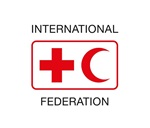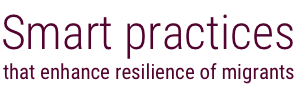Self-protection messages to reduce the vulnerability of migrants passing through Mexico.
The ICRC and the National Societies of El Salvador, Guatemala, Honduras, Mexico and the US have developed a set of self-protection messages to inform migrants passing through Mexico of the risks they may encounter on the way, where to find support, and how to take preventive measures to look after their health and well-being (link). The National Societies and ICRC determined the need for these self-protection messages by speaking directly to migrants. They realized that many volunteers and ICRC-supported shelters were being approached with questions on where to find information, but an easily accessible source did not exist. Self-protection messages were therefore developed to provide immediately accessible information to migrants at the right time. The messages were developed after a consultation and validation exercise that included migrants, National Societies and the authorities. Messages fit with the Red Cross Red Crescent policy not to encourage or discourage migration, but to reduce factors that contribute to the vulnerability of the migrant population, and relieve their suffering. The messages are distributed in the format of robust pocket-sized foldout laminated pamphlets that are waterproof. Messages are also distributed through radio spots broadcast in Spanish. In the pamphlet, migrants find general information on their rights and on how to maintain their health and well-being while travelling through Mexico. Migrants are also advised on how to prevent family separation. A map shows the location of shelters, dining halls, mobile clinics and ICRC/Red Cross offices. Last year 30,000 pamphlets were distributed at civil society shelters along the migratory trail in Mexico – mainly in the south.
30,000 pamphlets were distributed in 2015 along migratory trails; radio spots have recently been introduced at 17 stations.
Design. [P1] Focus on the needs and vulnerabilities of migrants. [P3] Included migrants in designing the pamphlets.
Implementation. [P6] Partnerships with shelters and radio stations. [P7] ICRC and National Societies worked together to design the pamphlet and distribute it along the migration trail.
- Frequent variations in the migration trail make it difficult to keep the information up-to-date.
- Monitoring the impact of this initiative is difficult.
- The pamphlets are also needed for extra-regional migrants, so translation into more languages (including English) is necessary.
- Need to expand the geographical coverage of the radio broadcasts.
Smart practices
Smart practices report and database survey
About the report
People migrate in pursuit of a better life for themselves and their families. As described in the International Federation of Red Cross and Red Crescent Societies’ (IFRC) Policy on Migration, “migrants are persons who leave or flee their habitual residence to go to new places – usually abroad – to seek opportunities or safer and better prospects.
Read more
About the International Federation

